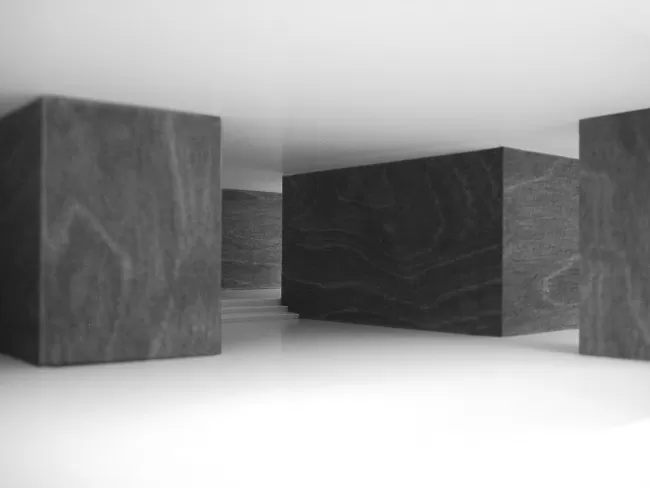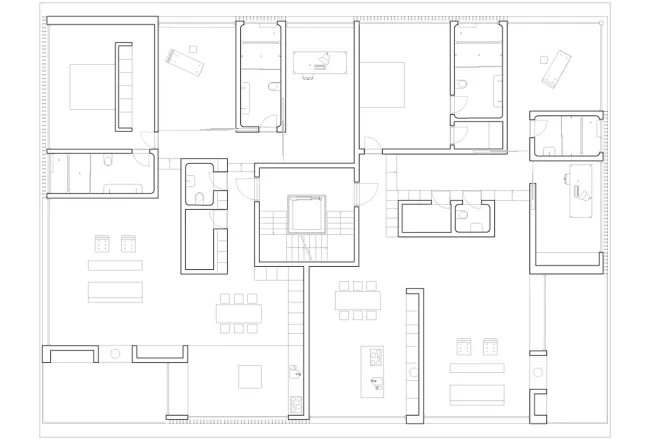Box Rule

Contiuous Living
There are two indicators on the current housing market that allude to the value of an apartment: the size and the number of bathrooms. On the American market, it is already more important to mention the number of bedrooms and bathrooms than to describe the actual living spaces.
‘Box Rule’ studies the possible architectural consequences of this attention focused on infrastructural amenities. What would the possibilities be for an apartment in such a context of spatial definitions based on luxury? – And what happens to the program in the rest of the apartment?
The emphasis on service rooms as an indication of a standard of luxury can be so excessive that the primary rooms effectively become the serving spaces. As a result, each room functions as its own self-contained, miniature universe.

Boxes Abstract
When combined, this essentially creates an apartment composed of unsophisticated hotel rooms. The concept of the hotel as the most comfortable form of serviced dwelling is metaphorically translated and woven into the organization of rooms. The living spaces result from the composition of suites where the functions of eating and dwelling are treated as residual spaces; they have lost value because they are not living or sleeping areas, nor representative or private spheres. Consequently, the figures of the rooms delineate a form of continuous living. Dwelling is possible everywhere, is oriented in all directions, and takes nothing beyond itself into consideration.

Floor Plan